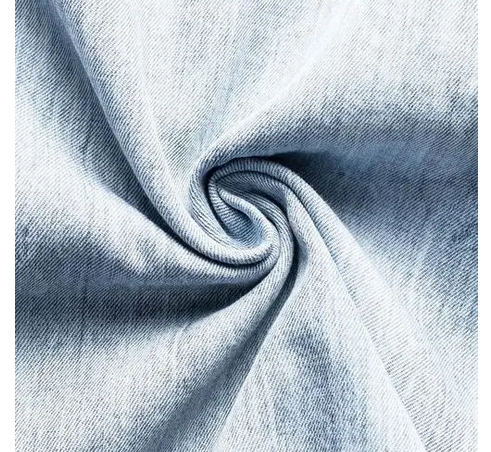According to the report of “China Yarn Network”, in order to find out the gap between China’s cotton quality and the world’s cotton quality, we conducted research in Qingdao, Shanghai, Guangzhou, etc. in 2012 and 2013 respectively. Major ports have conducted follow-up inspections on the quality of cotton from major importing countries (the United States, Brazil, Australia) and compared it with the quality of domestic cotton in China. The comparison found that the main gaps in Chinese cotton are in the following seven aspects:
1.
The phenomenon of “three silks” in domestic cotton is relatively common. Since most cotton in China is picked manually, cotton farmers have poor awareness of picking “three silks”, resulting in cotton containing “three silks” to varying degrees. Even though there is a small amount of machine-picked cotton in Xinjiang, due to the continuous use of large amounts of mulch film for many years to grow cotton, the waste mulch film is blown onto the cotton plants by the wind, causing the processed lint to contain small waste plastic films. Cotton spinning mills have to accept orders with strict dyeability requirements and can only choose Australian cotton, American cotton and Brazilian cotton. “Three silks” have become the biggest quality problem of Chinese cotton.
2.
China’s cotton varieties are single and cannot meet the needs of cotton spinning mills for various textile varieties. China currently mainly grows fine-staple cotton, and there is a small amount of long-staple cotton in Xinjiang. The fiber length of fine velvet cotton grown in China is mostly around 28mm. The varieties of imported cotton cover coarse staple cotton, fine staple cotton and long staple cotton. The fiber length covers 23mm to 38mm. The micronaire value can reach 7.0, which makes it highly optional.
3.
The strength of cotton fibers in China’s main cotton-producing areas is very low. It cannot meet the needs of Chinese textile enterprises to produce high-end textiles. In 2014, cotton production in China’s northwest inland cotton areas will account for more than 70% of the country’s total cotton production. However, the breaking strength of most cotton is below 28cN/tex, and some even 24cN/tex, which seriously restricts the development of Chinese cotton. Spinnability. The breaking strength of Australian cotton, Indian cotton and some American cotton is above 31cN/tex, and the breaking strength of West African cotton is also above 28cN/tex.

4.
The length of Chinese cotton cannot meet the needs of spinning high-count cotton yarn. With the improvement of people’s living standards, high-density and high-count textiles are favored by consumers for their softness and comfort. However, the production of cotton yarn with more than 60 counts requires cotton fiber with a length of more than 31mm. If long-staple cotton is used, the cost will increase significantly, so Textile companies can only choose Australian cotton or MCU5 Indian cotton with a length of 1-7/32; in order to reduce costs, the production of high-end open-end cotton yarn has to use imported cotton with a length of 23mm to 26mm, such as India’s V797.
5.
Adulteration in Chinese lint occurs from time to time. Driven by profit, some unscrupulous enterprises incorporate combed cotton, washed cotton, etc. during cotton processing, and the trend is developing from 200-type cotton processing plants to 400-type cotton processing plants. During the annual cotton purchase and storage period in 2012 and 2013, the imported combed waste cotton at major ports in China was more than 1,000 yuan/ton higher than the price when no purchase and storage was in place. The supply was still in short supply. Once the purchase and storage ended, the unsaleable price immediately dropped. I saw in a storage warehouse that the short fiber rate of the cotton entering the warehouse was as high as ever. China’s cotton standards do not have any restrictions on short fiber ratio indicators, giving criminals an opportunity to take advantage. Except for imported cotton, which is occasionally found to be mixed with cotton linters in roller cotton, this phenomenon is almost not found in cotton from other countries.
6. The problem of artificial mixed-level processing is prominent. Mainly in the three years of purchase and storage, some cotton processing plants mixed late-stage frost yellow cotton and pulled-out peach cotton with early-stage high micronaire seed cotton in order to transfer late-stage cotton with low micronaire value. Affects the dyeability and strength of cotton.
7.
Some cotton processing companies have poor integrity and forge their origin when processing cotton. They even repackage high-sugar Sudanese cotton and Mexican cotton with Chinese origin markings, causing serious quality hazards. For example, there is a cotton processing company that returned the reserved cotton for sale after the discovery of circular cotton. The company publicly stated online that the cotton it returned was processed from Australian cotton. Due to integrity reasons, although the batch of cotton was It is indeed close to the quality indicators of Australian cotton, but no cotton mill is willing to buy and use cotton from this factory at the price of Australian cotton. This is the price of a lack of integrity.
In view of how to gradually reduce and eliminate the existing gaps, the author believes that the first is to strengthen the market allocation of cotton resources to achieve survival of the fittest; the second is to strengthen supervision , let those with poor integrity and illegal operations pay the price or be eliminated; the third is to strengthen cotton scientific research, find out the reasons for the low cotton intensity in the northwest inland and solve them in a targeted manner.








